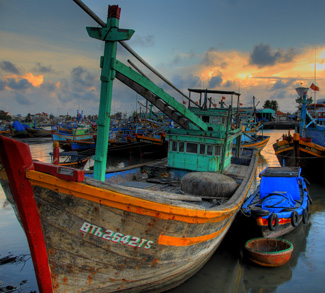China’s land reclamation moves in the South China Sea may be cause for reproach, but no one will do a thing about Beijing’s island-building program beyond the huff and puff of objection.
While the U.N. Convention on the Law of the Sea (UNCLOS) has been deliberating on the Philippines’ case against Chinese expansion into the Spratly Islands, China has stated that the results will have no bearing on its behavior, and has since reclaimed over 2,000 acres of land.
China continues to push the limits because it knows it can get away with its land grab, avoiding conflict or tarnishing any of its bilateral relations, even as the United States tries to vilify its eastern rival.
US Secretary of Defense Ash Carter remarked to the Shangri-La Dialogue Security Council in May that China risks miscalculation or conflict with its actions.
Adding to the litany of concerns, Malaysia’s defense minister warned of the potential for this flashpoint to escalate into one of the region and the world’s deadliest conflicts. Though tensions have risen in region making the Spratlys a potential flashpoint, China rarely lets its actions risk stability.
Pursuing its claims over the South China Sea – overstepping those of the Philippines, Vietnam, and Malaysia among others – is not the move of a bellicose nation poised for overt conquest. Instead it’s the cool calculation of a country with a penchant for stability and a keen eye for potential dangers; and it is this insidiousness that is most alarming.
There is justification in the international community’s concerns with China’s expansion in the South China Sea. Regional neighbors don’t want to live in the shadow of a growing hegemon who employs bully tactics and uses its economic clout against them. They therefore look to the Washington for help. It is also in the United States’ interest to hamper the ascendency of its eastern rival – BRICS, the Asian Infrastructure Investment Bank (AIIB), the rise of the New Silk Road – to maintain its fleeting dominance in Asia.
Carter stated that in its role as international police, America will ‘fly, sail, and operate wherever international law allows;” a lightly veiled reiteration of its desire to ensure that it keeps its military supremacy in the region.
China has been evading any potential point of dispute, responding that its actions in the South China Sea will not get in the way of free maritime or air transit in the region. Instead, Beijing has approached the issue of sovereignty unilaterally under the pretense that it is acting ‘lawfully, reasonably, and justifiably for a nation of its size, and one with an international responsibility.’
China’s Foreign Ministry echoed the logic that it is the region’s largest country, and by implication it does not intend to bend to the will of its neighbors. Indeed, China uses bilateral agreements to maintain control in the region.
China reminds its neighbors and trade partners of the boon of unimpeded relations. Bilateral trade volume between China and the United States reached $550 billion, with a relatively comparable balance of trade with Vietnam, Malaysia and the Philippines. Figures which Chinese officials urge far outweigh any petty differences between them.
The only recourse left for America and its grieving allies, shy of conflict, is encouraging China to abide by the Law of the Sea tribunal by way of multilateral international institutions and condemning its sovereignty building in the Spratlys.
On the other hand, if China is able to claim sovereignty on these islands, it will pose a long-term threat to the vital trade route through which $5 trillion worth of shipping crosses every year. Seaports, airbases, and armaments mark the threat of growing, regionally-active China whose control over the South China Sea is dominant, even in the face of escalating US military presence.
With its grasp on the South China Sea – similar in shape to that of the Nine-Dash Line claim forwarded by the Nationalist government – China can enforce its own interpretation of maritime law, stretching its Exclusive Economic Zones (EEZ) 200 miles from shore, and forming a ‘Great Wall of Sand’ against its regional neighbors.
If the world cedes the islands as all but fait accompli to Beijing, it will mark a shift in the paradigm where the United States and the West no longer hold a dominant position in Asia. China will claim and control the Spratly Islands, tightening its grip and expanding military capabilities in a strategic area.
For Washington, the danger lies in the shift in dominance becoming apparent to regional and global powers. The United States and its allies may vociferously condemn China, but its inability to put weight and action behind its words is proof that real power in the region is tilting towards Beijing.
The opinions, beliefs, and viewpoints expressed by the authors are theirs alone and don’t reflect any official position of Geopoliticalmonitor.com.



![Flanked by Malaysian Foreign Minister Anifah Aman and Assistant Secretary of State for East Asian and Pacific Affairs Daniel Russel, U.S. Secretary of State John Kerry participates in the U.S.-ASEAN meeting on the sidelines of the 70th Regular Session of the UN General Assembly in New York, New York, on September 30, 2015. [State Department photo/ Public Domain] Flanked by Malaysian Foreign Minister Anifah Aman and Assistant Secretary of State for East Asian and Pacific Affairs Daniel Russel, U.S. Secretary of State John Kerry participates in the U.S.-ASEAN meeting on the sidelines of the 70th Regular Session of the UN General Assembly in New York, New York, on September 30, 2015. [State Department photo/ Public Domain]](https://www.geopoliticalmonitor.com/wp-content/uploads/2016/02/ASEANNYCMeeting.jpg)
